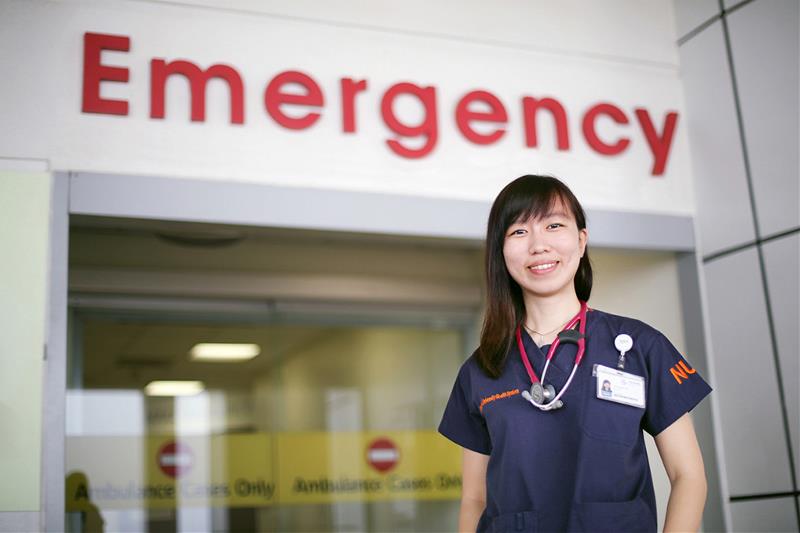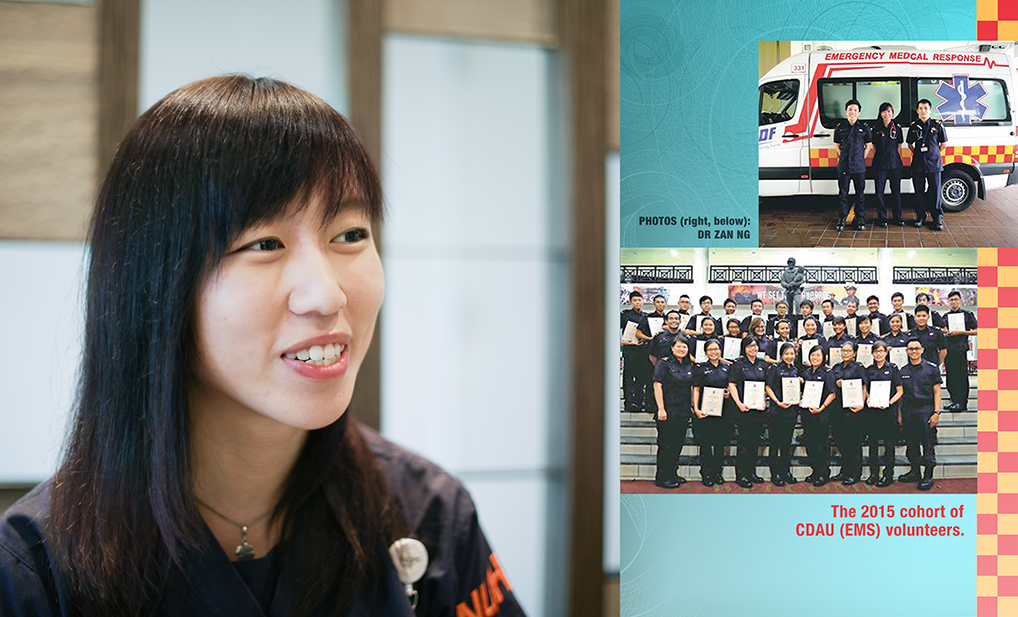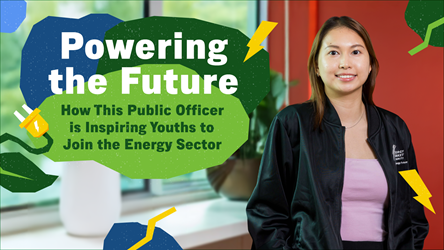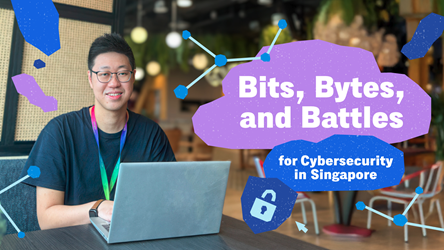Alpha Lifesavers

Were you always interested in Medicine?
Yes I was; in my childhood years, I wanted to be a pediatrician, amongst other dreams of being a detective, writer and diplomat, but my aspiration to study medicine was crystalised after positive experiences during hospital attachment programmes in high school. So when it was time for me to apply for my university studies, I decided that I wanted to do something where my knowledge and actions could help people and impact their lives on a daily basis.
I graduated from medical school early this year and am now a first-year resident in Internal Medicine at NUH, where I’m currently rotating through the surgical department. I really enjoy my work in Medicine because the environment which I operate in is always intellectually stimulating, and I get to learn something new and meet new people every day.
When did you initially experience the life of a first-responder with the SCDF?
Two years ago, as part of the Emergency Medicine rotation in Year Four of medical school, I participated in a full-day ambulance attachment with Sengkang Fire Station. It was an invigorating experience – from 8am to 9pm, we attended to six different cases, ranging from medical emergencies to trauma – which differed greatly from the hospital environment I was used to. I immediately fell in love with the nature of frontline duties performed by the SCDF emergency responders (comprising a paramedic and NSF medic) whom I was attached to, and seeing my interest in pre-hospital care, they strongly encouraged me to volunteer with the CDAU to develop my interest further.

When did you volunteer with the CDAU’s Emergency Medical Services (EMS)?
I joined the CDAU in 2015. Launched in 2006, the CDAU provides individuals with a passion in SCDF’s mission the opportunity to work alongside officers of the SCDF in performing various frontline duties. The minimum requirement for volunteers is to serve 16 hours of duty a month, and I’m currently volunteering at Bishan Fire Station. I do two to three shifts a month as far as my schedule permits, usually on weekends when I’m not working in the hospital.
Pre-hospital care is extremely different from hospital care, and I remember the very first case I attended to in 2015. It was late at night, during one of the election rallies, in Serangoon. An elderly man was in cardiorespiratory distress, and when we arrived at his home, we were concerned about the possibility of acute coronary syndrome or pacemaker malfunction, given his extensive medical history and electrocardiogram strip at the scene. We worked quickly to stabilise him before rushing him to the nearest hospital, and it was indeed heartening to receive positive feedback from the patient via the SCDF feedback portal a few months later, commending the crew on a job well done.
Tell us about your team, and the work of emergency responders.
Our four-man team comprises a paramedic (crew leader), an Emergency Medical Technician, an NSF medical orderly and a CDAU volunteer. As emergency first-responders, we learn to work within the constraints of the equipment and drugs that we bring with us, so important medical decisions have to be made swiftly, and the administration of treatment at a scene involves lots of hands-on work.
The conditions that we operate under can also be dramatically different from one moment to another; we may work alongside firefighters in motor vehicle accidents as they rescue a casualty from a vehicle, or with police officers in other difficult situations.
We also meet a wide variety of people in our line of work, from young children to the elderly, and different patient populations have their attendant medical needs that we need to be familiar with and sensitive to. In addition to attending to the patient in distress, there is also a social aspect to what we do, as we’ll necessarily have to assuage the fears of anxious family members, and maintain a high level of professionalism when attending to cases in full view of the general public. After all, medical emergencies are unprejudiced in terms of age, race, religion and social status – it can strike anyone, anywhere, when it is least expected.
This was brought home to me again in September when, during a morning jog with my father, I received an alert on my phone via SCDF’s myResponder mobile application. There was a cardiac arrest case near my location, and I arrived to find another community first-responder, Mr Jeffrey Quek, on the scene. While I assessed the situation and performed seven cycles of cardiopulmonary resuscitation on the patient together with my father, Jeffrey rushed for the nearest automated external defibrillator. Together, we did our best to resuscitate the patient before the SCDF paramedics arrived.
What do you love about being a volunteer medical orderly?
It is really enriching and exciting to be part of a team of professionals who have to respond, as one, to an emergency. The EMS staff whom I’ve had the chance to meet or work with never fail to inspire me, and I’m thankful for them accommodating me in their community.
Being a volunteer has also helped me understand the home situations of patients better, and allowed me to be more confident in assessing emergencies on call at the hospital at night. Pre-hospital care is extremely different from the hospital care which I have been trained to provide, and I was and am still thrilled at the chance to translate my passion in emergency care into a meaningful volunteering endeavor. To me, it is a great privilege to be able to help others in their greatest times of need, and a humbling experience when patients completely put their trust in us as first-responders to render the best care possible.

Why would you like to continue volunteering?
At the Home Team Festival in 2015, I had the pleasure of meeting COL (Dr) Ng Yih Yng, Chief Medical Officer of the SCDF and then Emergency Medicine consultant at the Singapore General Hospital. When I asked what he’d like to share with doctors-to-be, he said, “As medical students, volunteering on SCDF ambulances can be a very fulfilling experience because it allows you to walk an additional mile in the footsteps of the patient… As doctors, you can [also] work with us in your professional capacity to help teach paramedics, or even develop new clinical protocols to improve patients’ lives.”
That is why I hope to continue being a volunteer. At present, I’m helping to design the curriculum for the newer cohorts of CDAU medics, and eventually, I’d like to be involved in continuous medical education for paramedics as well.
Each call has been a diagnostic challenge and learning opportunity thus far, and I really enjoy learning from the paramedics and teaching the paramedic trainees and medics whom I go on shift with. I believe that my experiences in the CDAU will help me to become a better doctor, and hope that my medical training allows me to positively contribute to the pre-hospital care of the patients that I attend to.
All in all, I’m thankful for this opportunity, and look forward to serving society both as a doctor and as a volunteer with the CDAU in the many years to come.
- POSTED ON
Oct 13, 2016









